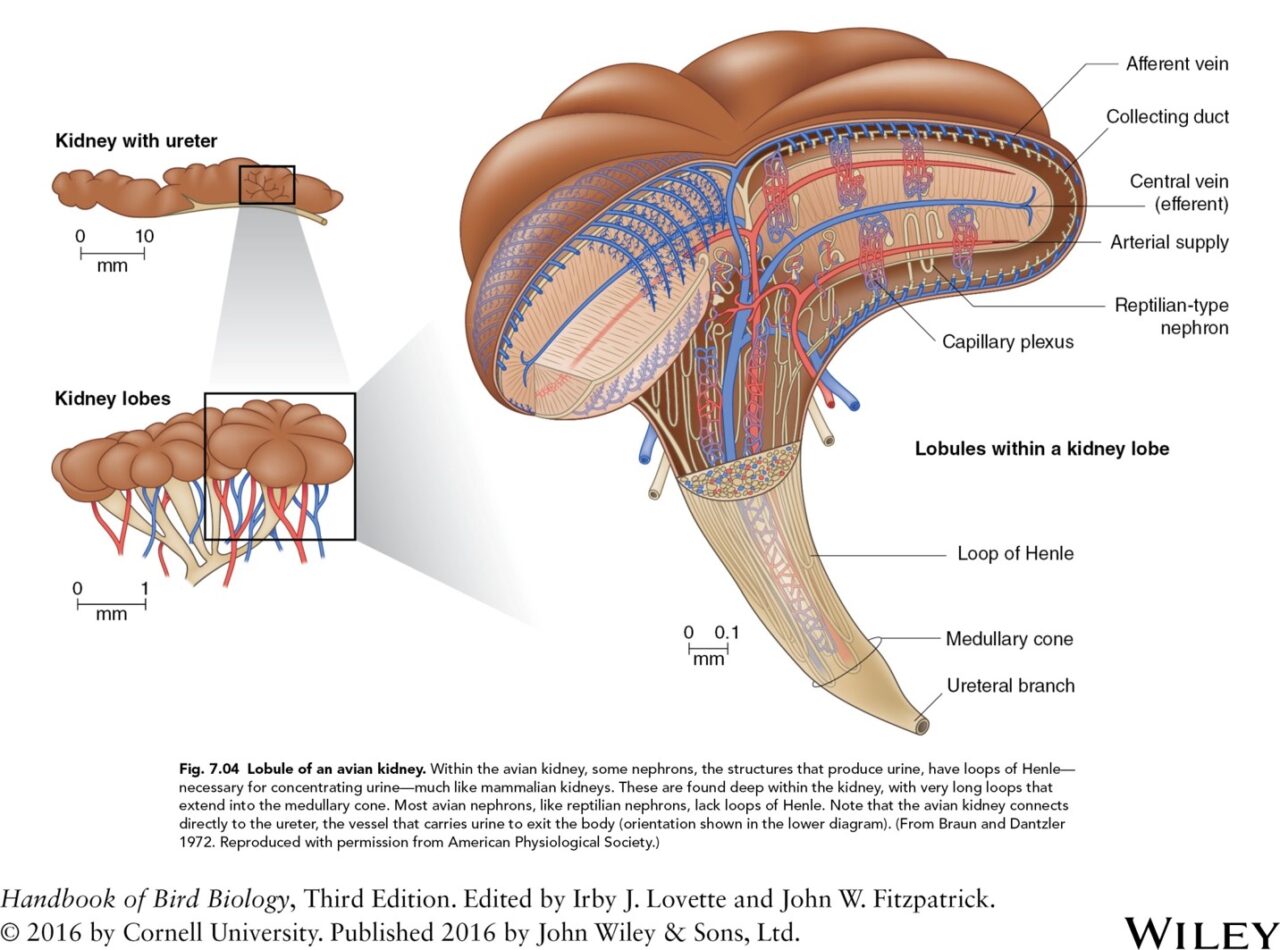Birds eat and drink just as we do. Like us, they need food and water to survive. What happens to all the water they ingest? In this article, you will learn about the incredible urinary systems of birds and find out exactly how birds pee.
Birds do not pee the same way humans do. Their kidneys produce uric acid instead of urea. A thick slurry of uric acid enters their cloaca where it mixes with or surrounds feces and is then excreted from the body. Except for a single bird species, birds do not have urinary bladders.
Continue reading to learn a lot more about how birds pee. We will look at their urinary system in detail and explore each part and its role in the digestive process. Throughout the post, I will compare the bird urinary system to our human urinary system. If you have to pee first, go now, I’ll wait…

As an Amazon Associate, I earn from qualifying purchases. Birdwatch World earns commissions from Amazon and similar affiliate programs from any purchases made via links in this article.
How Do Birds Pee?
Before we take a look inside a bird’s body at its urinary system, we’ll look at the human urinary system. This way, I can compare the two as the article progresses.
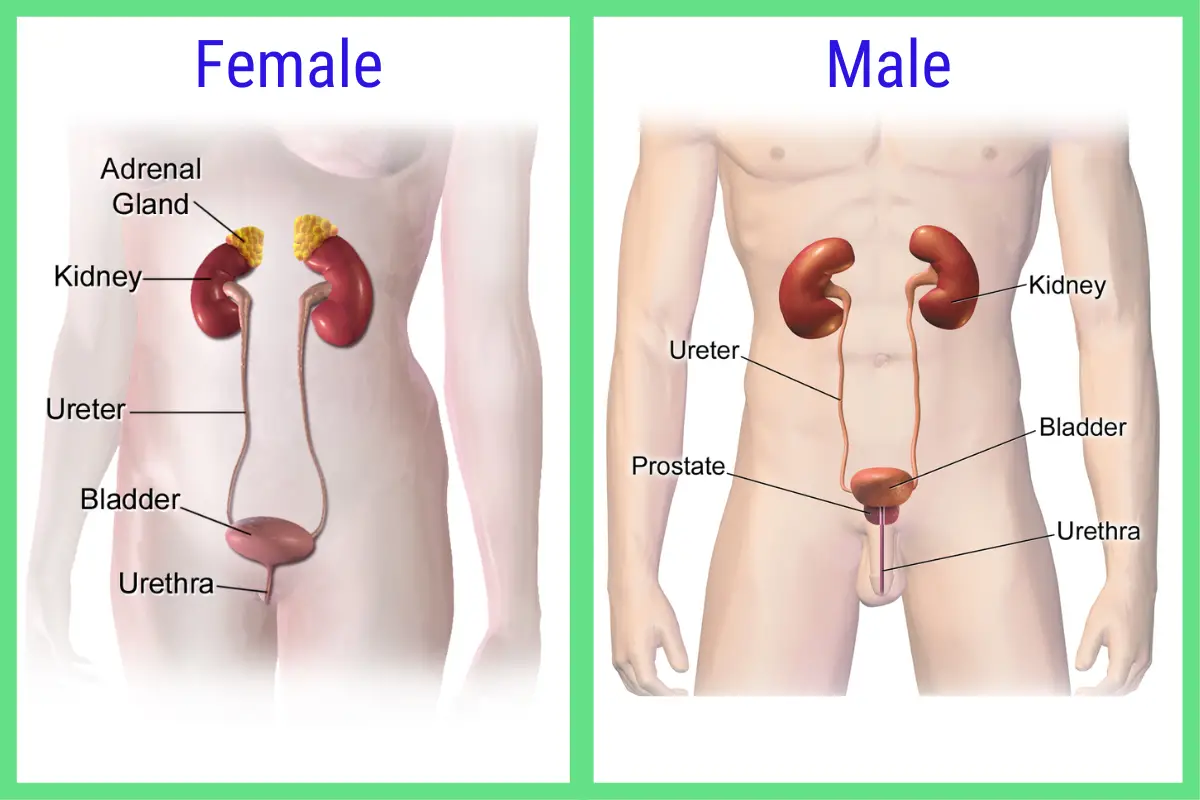
Male illustration – BruceBlaus, CC BY-SA 4.0 https://creativecommons.org/licenses/by-sa/4.0, via Wikimedia Commons
The human urinary system is very basic. Urine is formed in the kidneys through the filtration of blood. It is then passed to the bladder via the ureter and then through the urethra and out of the body. Of course, it’s a little more involved than that but for this post, I’ll keep it simple.
For most birds, however, the process is slightly different. Birds also have a pair of kidneys that filter their blood and excrete salts and nitrogenous waste. The difference is that birds’ kidneys (and their livers) produce uric acid.
The human body produces urea which is less toxic and doesn’t require as much water for its excretion. Uric acid is not as water-soluble and thus forms a semisolid paste. This is the white stuff we see in birds’ “poo.”

Within the kidneys are structures called nephrons. Each nephron is a tiny tubular structure that produces urine. Most nephrons in birds contain loops of Henle; these structures concentrate the urine to pull water from it that is absorbed back into the birds’ bloodstream.
Upon leaving the kidneys, a bird’s urine enters the cloaca where the digestive, excretory, and reproductive systems come together. Within the cloaca, the urine mixes with and surrounds the feces before being ejected from the bird’s body via the vent.

So the substance we refer to as bird poo is bird poo and pee mixed.
Do birds fart? Find out in this article I’ve written.
Do Birds Have A Bladder?
The diagram above is typical of almost every bird on the planet, they do not have a urinary bladder. Their kidneys feed straight into the cloaca via the ureter. However, one species of bird does have a bladder.
Common ostriches are the only bird species with urinary bladders. They don’t have a bladder per se but their cloaca is divided into two sections: the proctodeum and the coprodeum.
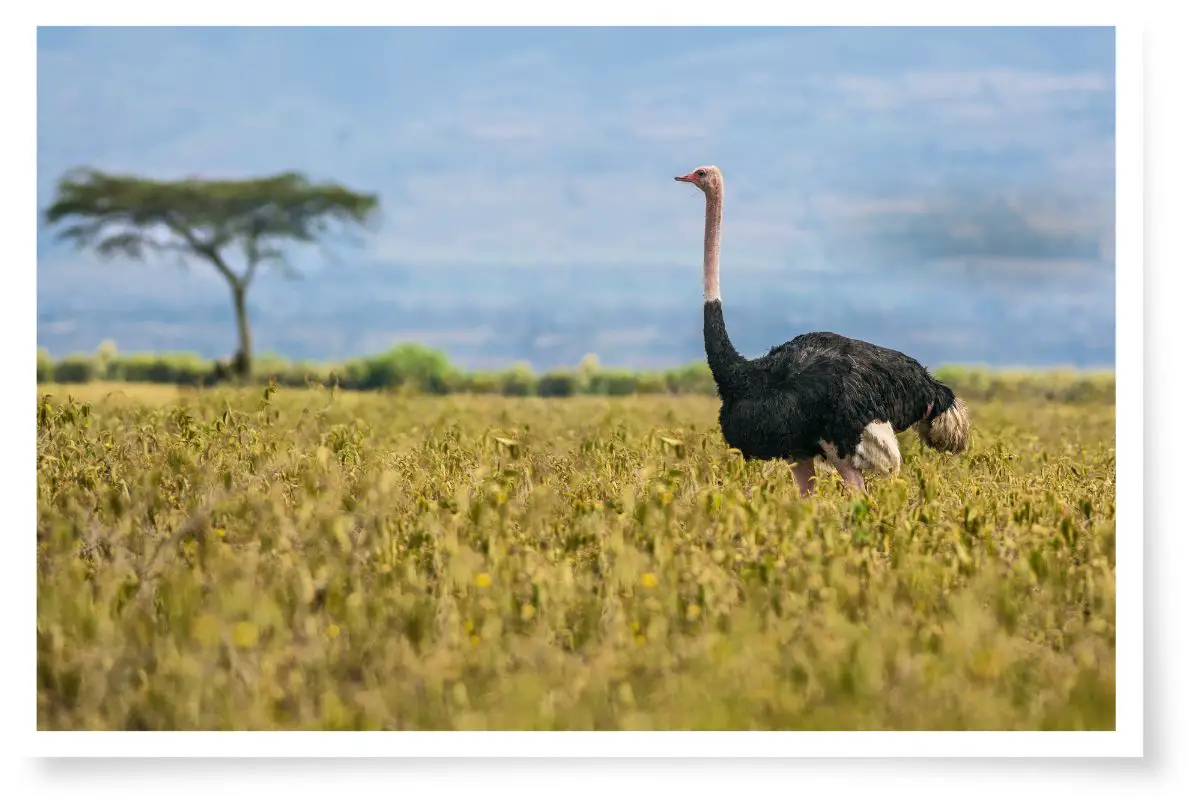
It is the coprodeum that functions like a bladder. A sphincter separates it from feces coming from the colon, therefore, keeping urine and feces separate.
How Do Birds Pee? – The Kidneys and Cloaca
Our bladders and kidneys are a perfect design for our bodies and dietary requirements. It is the same for birds with their kidneys and cloacas.
In both humans and birds, the kidney’s function is to filter blood and expel the waste as urine. They also regulate water, sodium, and other soluble substances in the bloodstream.
In humans, between 91 and 96 percent of urine is water. As each bird species consume a different diet, the composition of their droppings is different. As an example, however, the droppings of urban pigeons are around 75.7-79.2% water.

Due to their different diets, the hydration requirements for each bird species differ also. Seed-eating birds only receive about 10% of their water from what they eat and so drink water more often. Carnivorous and insectivorous birds eat prey that has about the same water content as their own bodies (60-70%) and so they may not need to drink water at all.
The amazing thing about the cloaca is that it can retrieve a lot of water and salt from the urine. In seed-eating birds like galahs, house sparrows, and chickens, up to 70% of salt and 10-20% of the water that comes from the kidneys can be reabsorbed.
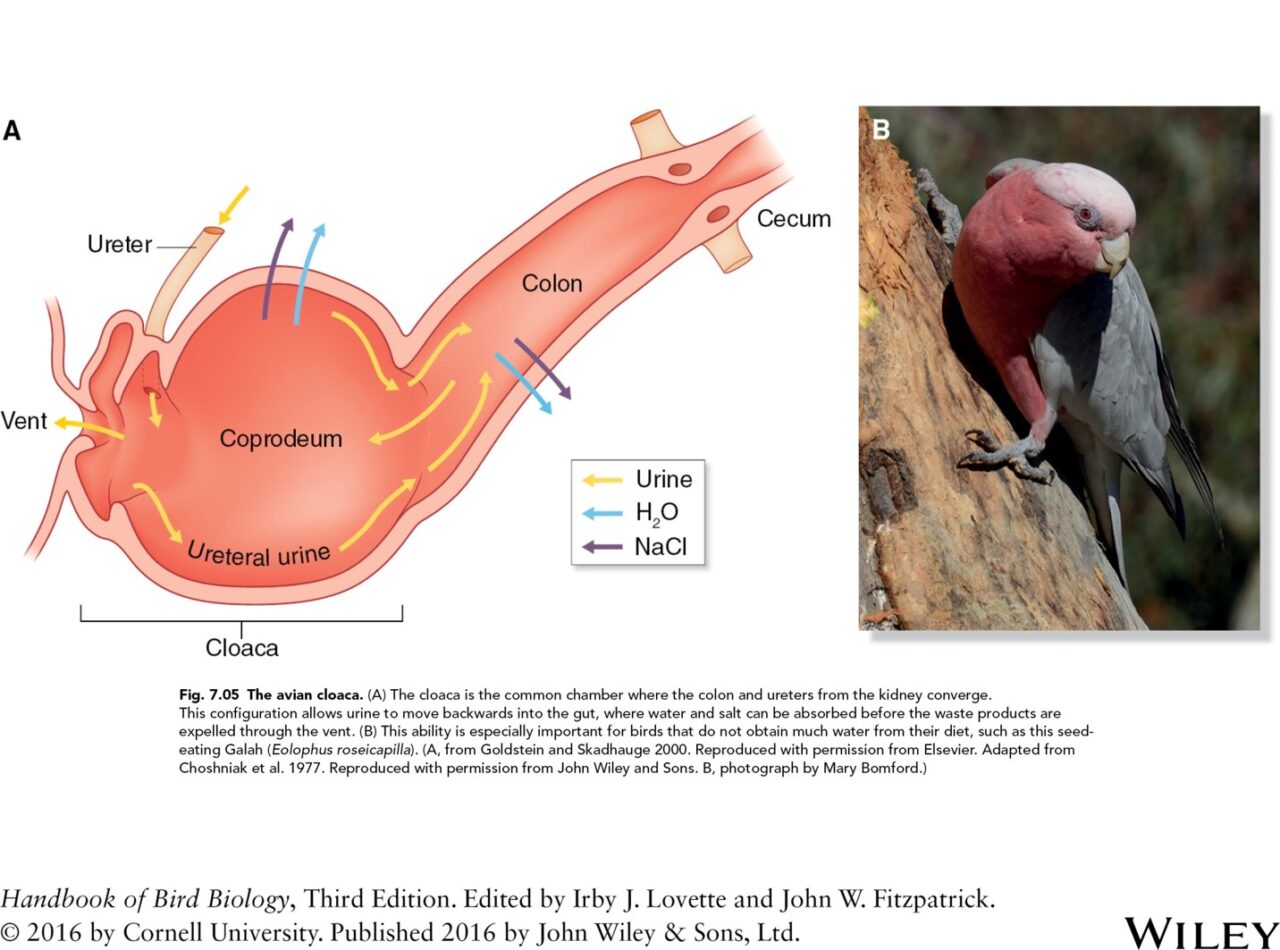
The contents of the cloaca can also reflux back into the colon and lower intestine. A lot of water is reabsorbed this way also.
An Interesting Fact About Bird Pee
According to Wikipedia, bird droppings contain high levels of nitrate and ammonium. This is the reason they are often used for fertilizer on farms and in gardens.
The nitrogen content as shown on the Wikipedia page is 80% uric acid, 10% protein, 7% ammonia, and 0.5% nitrate. It also says that it contains some phosphorous, calcium, and magnesium.
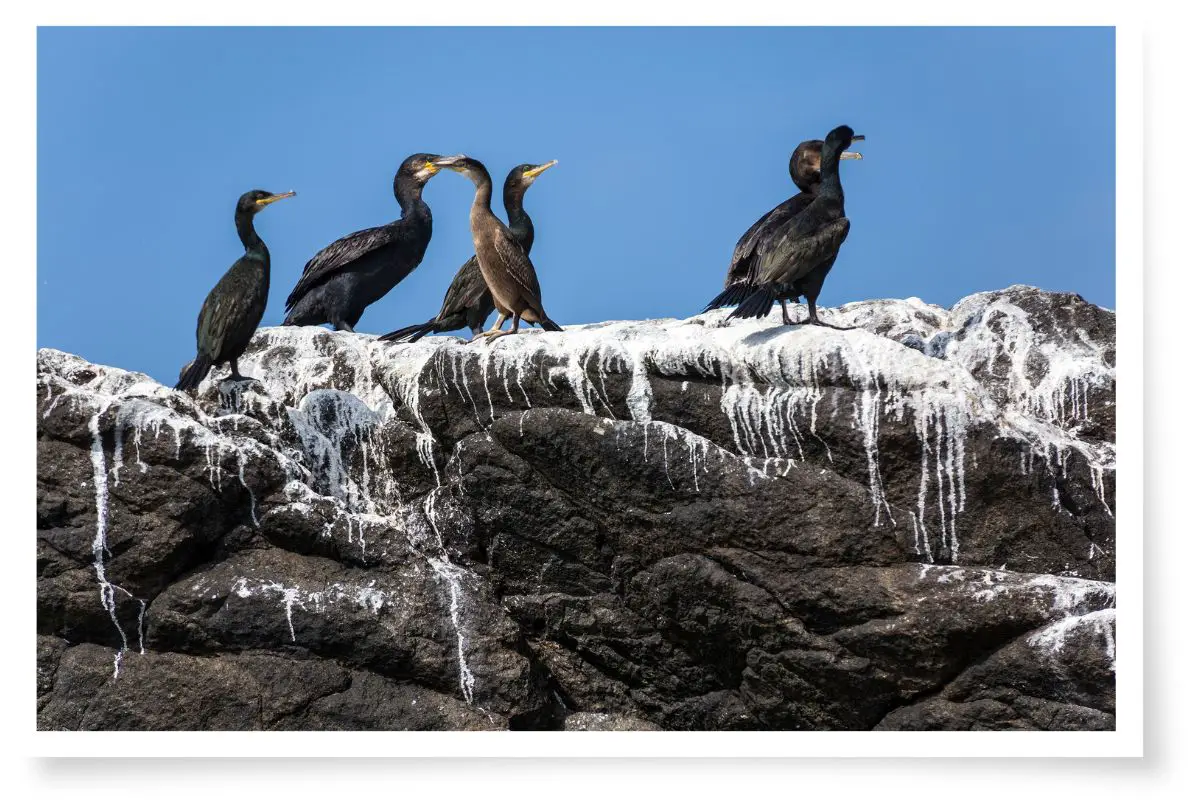
During my research, I came across an article published in the August 2019 edition of the Journal of Ornithology that suggests that bird droppings do not contain any uric acid at all.
Nicholas Crouch, a scientist at the University of Texas analyzed the urine of six different species and found no evidence of uric acid in any of them. This flys in the face of all the chemical analyses of bird droppings done previously.
It is thought that there may be bacteria in the bird’s cloaca that break down the uric acid before it is excreted.
Find out how birds digest their food in this post on my site.
How Do Birds Pee? – The Vent
The final destination of urine and feces in a bird’s body is the vent. This is the opening at the bottom of the cloaca that serves as both an exit for waste and an entry/exit point for sperm during mating. The vent is capable of everting so it protrudes outside the bird’s body.

Muscular contractions force the contents of the cloaca through the vent. If you have ever seen a bird emptying its cloaca, you will know that it can produce quite a decent squirt of excrement.
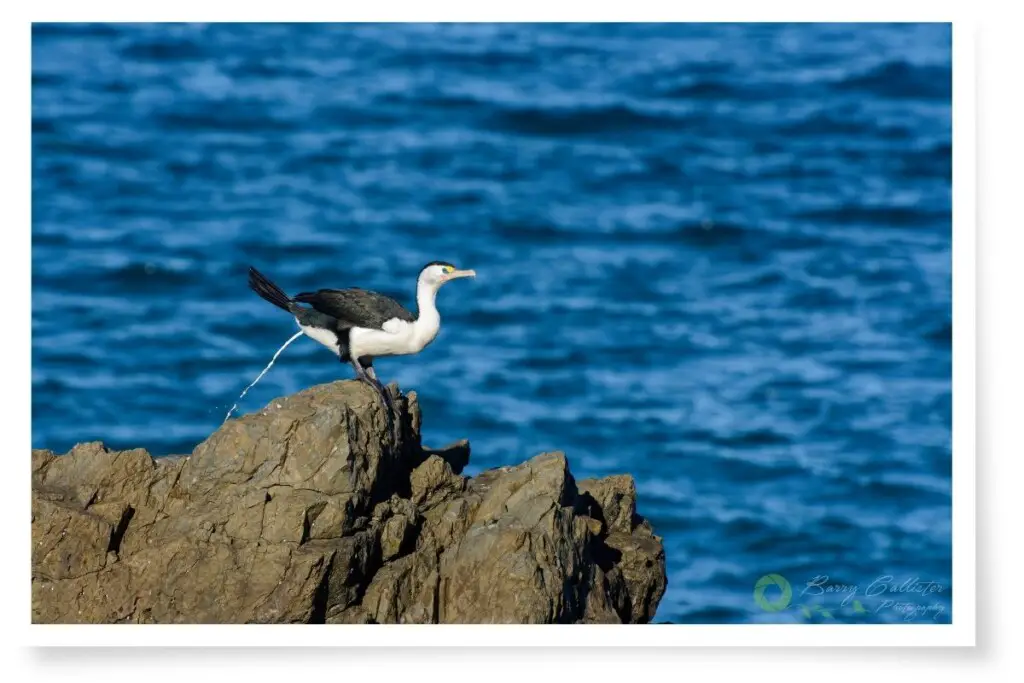
Conclusion
Now you know exactly how birds pee. They have a very effective and simplified excretory system. While the human body has separate systems for processing and ejecting fluid and solid wastes, the avian body combines these.
Like most other physical traits in birds, this is yet another weight-saving feature perfectly suited to a flying animal.
I hate to say it but I’ll bet the next time you see a bird poo you’ll turn to the person you’re with and say “that bird is not just pooing, it’s weeing at the same time.”
References
- Cornell Lab of Ornithology’s Handbook Of Bird Biology – Irby J. Lovette, John W. Fitzpatrick.
- Movement of urine in the lower colon and cloaca of ostriches – G. E. Duke, A. Degen, J. Reynhout
- Dietary Habits of Urban Pigeons (Columba livia) and Implications of excreta pH–A Review – Dirk H. R. Spennema, Maggie J Watson
- Guano – Wikipedia
- A re-evaluation of the chemical composition of avian urinary excreta – Nicholas M. A. Crouch, Vincent M. Lynch & Julia A. Clarke
- Bird droppings defy expectations – University of Texas at Austin

